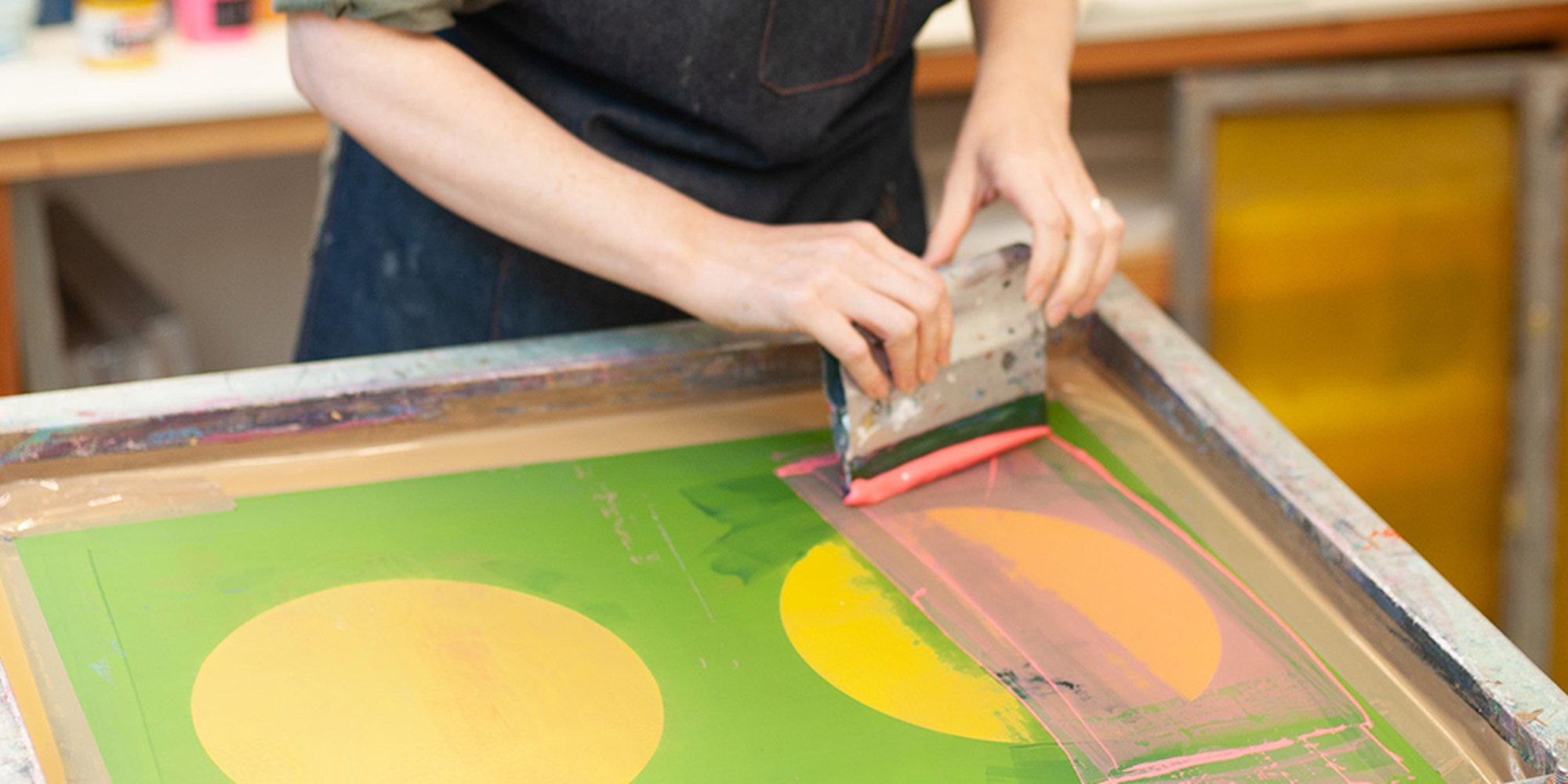ChatGPT said: 10:9 Design Screen Printing Texas: costs explained
The Vital Overview to Comprehending Screen Printing and Its Versatile Uses
Screen printing has a rich history that goes back to old times, developing right into an innovative strategy made use of across numerous markets today. This guide explores the ins and outs of the screen printing process, describing its applications in fashion, home, and marketing décor - 10:9 Design contact. Recognizing these basics can open up creative capacity for both industrial and artistic jobs. The following sections will certainly reveal vital ideas and methods to boost one's screen printing ventures
The History of Screen Printing
Although screen printing has origins that trace back centuries, its evolution reflects the imaginative and technical improvements of different cultures. Coming from ancient China, the strategy was at first used for embellishing fabrics and later spread to Japan, where it ended up being indispensable to Ukiyo-e woodblock printing. The technique moved to Europe in the 18th century, where it acquired popularity amongst craftsmens and industrial printers. The creation of picture emulsion in the 20th century transformed screen printing, enabling for even more complex designs and higher effectiveness. Musicians like Andy Warhol better pushed its appeal, using the tool to develop famous jobs that blended commercialism and fine art. By the late 20th century, screen printing had established itself as a flexible technique, utilized in vogue, advertising and marketing, and great art. Today, it remains to advance, integrating electronic technology and expanding its applications throughout numerous sectors.
The Screen Printing Refine Explained
Screen printing transforms artistic visions into concrete layouts through a series of accurate steps. A picture is produced and then moved onto a screen, typically made of great mesh material stretched over a structure. A light-sensitive emulsion is applied to the screen, which is subjected to light, solidifying in areas not covered by the picture. After washing out the unhardened solution, a pattern is created.
Next, the screen is placed over the substrate, whether it be textile, paper, or one more material. Ink is then pressed through the open areas of the stencil making use of a squeegee, transferring the layout onto the substratum below. This process can be repeated for multiple colors, requiring different screens for each shade. Finally, the published thing is cured utilizing heat to guarantee the ink sticks properly, leading to a resilient, dynamic style on-line.
Sorts Of Screen Printing Techniques

In addition, specialty strategies, such as discharge screen printing, get rid of color from the textile to produce softer prints, while foil screen printing uses metal aluminum foil to achieve a shiny finish (10:9 Design Abilene). Each method supplies distinctive attributes, satisfying different imaginative requirements and production ranges, inevitably expanding the opportunities within the screen printing domain
Applications of Screen Printing in Numerous Industries

In addition, the signage and marketing fields make use of screen printing for producing appealing displays and banners. This method enables vibrant shades and elaborate layouts that catch focus. In electronics, screen printing is utilized for using conductive inks to circuit boards, vital for part connections. Moreover, the home décor market embraces screen printing to produce unique designs on textiles and wall art. Overall, screen printing functions as a crucial tool throughout varied fields, enhancing explanation items with individualized and aesthetically appealing graphics.
Tips for Effective Screen Printing Projects
While taking on a screen printing task, mindful interest to detail can substantially enhance the final outcome. Selecting top quality materials is necessary; this consists of the screen, inks, and substrates. Making use of ideal mesh counts can affect ink deposition and detail resolution. Prep work is similarly important; thorough cleansing of screens and appropriate direct exposure times ensure crisp prints.
Next, exact registration is essential for multi-color prints. Using alignment tools can assist achieve accurate layering. In addition, screening prints on scrap products prior to production assists identify potential issues without squandering sources.

Often Asked Concerns
What Products Are Best for Screen Printing on Material?
Cotton and polyester blends are optimal for screen printing on textile because of their toughness and ink absorption. Additionally, specialized materials like silk or canvas can create special appearances and coatings, improving the overall style top quality.
Exactly how Do I Clean and Maintain Screen Printing Devices?
To clean and maintain screen printing tools, one ought to frequently clean screens with ideal solvents, inspect squeegees for wear, oil relocating parts, and store all products in a completely dry, dust-free environment to lengthen their life expectancy.
What Are the Ecological Impacts of Screen Printing?
Screen printing can have considerable environmental influences, consisting of chemical waste from inks and solvents, water use throughout cleaning processes, and energy usage. Lasting practices and environment-friendly products are important for decreasing these unfavorable effects.
Can Screen Printing Be Done in your home Efficiently?
Screen printing can be efficiently done at home with the best products and methods. Hobbyists can produce quality prints, though success depends upon their skill degree, devices, and understanding of the procedure included.
What Are the Expenses Connected With Beginning a Screen Printing Company?

Starting a screen printing organization involves costs for tools, products, and office. First expenditures usually range from a few hundred to several thousand bucks, relying on the scale, top quality of machinery, and wanted manufacturing review capacity.
Screen printing has a rich history that dates back to ancient times, evolving into an advanced technique utilized throughout various sectors today. Another strategy, rotating screen printing, utilizes round screens, assisting in continual printing on material rolls, consequently boosting efficiency for large-scale manufacturings. Furthermore, specialty strategies, such as discharge screen printing, remove color from the fabric to produce softer prints, while foil screen printing applies metal foil to accomplish a shiny finish. In the fashion sector, screen printing is extensively made use of to develop vibrant layouts on apparel, making it possible for brand names to showcase their special styles. Cotton and polyester blends are perfect for screen printing on fabric due to their resilience and ink absorption.